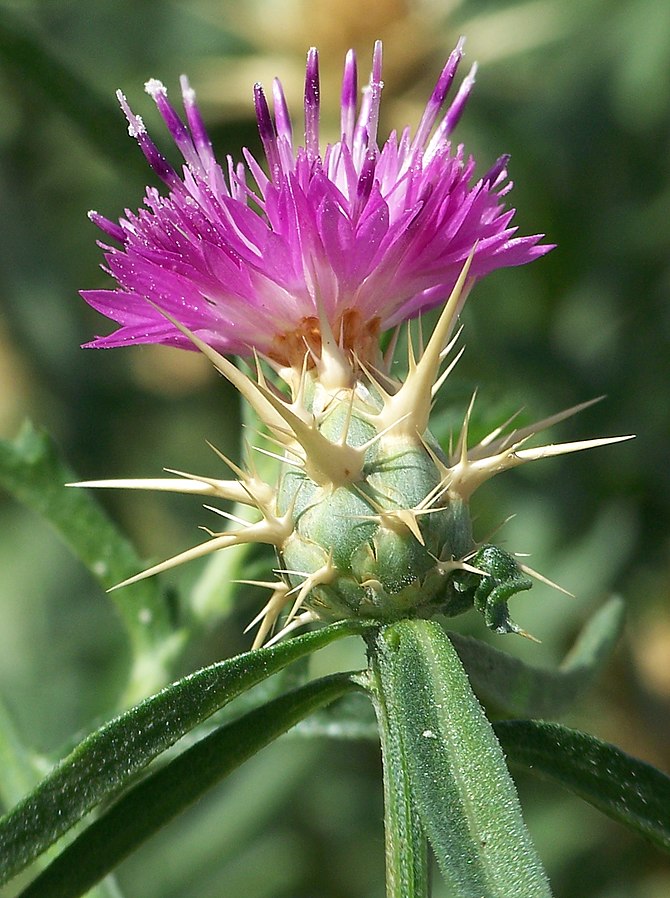Purple Starthistle

Purple Starthistle
(Centaurea calcitrapa)
Priority: - Prevent / EDRR
Tags: Agricultural | Terrestrial
Identification and Reproduction
Identification:
- This thistle grows up to 1.3 m tall. It is very branched and can appear bushy.
- Stems are hairless, grooved and covered in resin spots.
- Leaves on the upper stem are small and simple while lower stem leaves are lobed.
- Stems and leaves are covered in fine, cobwebby hairs but will become smooth with maturity.
- Each inflorescence contains 25-40 disk flowers per head. Flower bracts are green or straw-coloured depending on season and covered in sharp yellow spines.
- Flowers are purple and bloom from July through September.
Reproduction:
Purple starthistle reproduces by seeds that can be viable for 3 years.
Habitat & Ecology
- Well adapted to various soil types.
- Slightly shade-intolerant.
- Often found on fields, roadsides, exposed areas, grasslands, rangelands and recently logged sites.
Impacts
Social:
- Reduces foliage availability and displaces native species.
- Displaces desired crop species.
- Unpalatable to livestock.
Management
Prevention is a high priority for this plant.
- Thoroughly clean shoes, clothing, pets, equipment and vehicles when leaving an infested site.
- Avoid transporting unknown soil and plant materials.
Resources
For more information check out the Texas Invasive Species Institute page on Purple Star Thistle here.
Header photo (Xemenendura)




